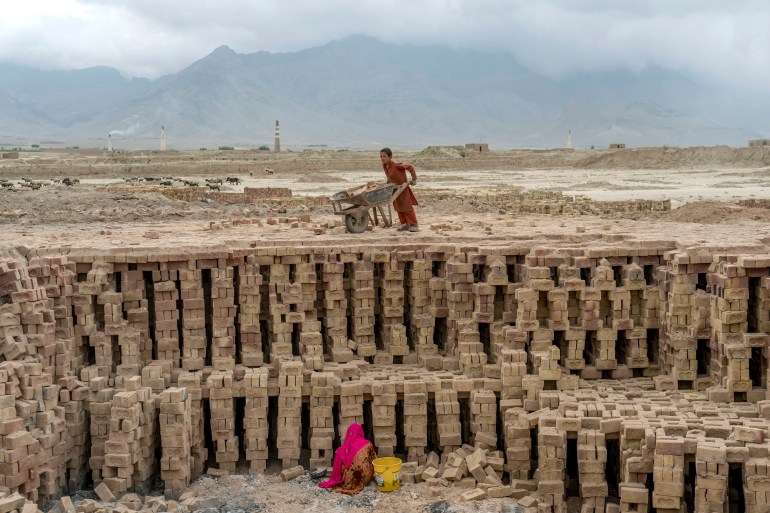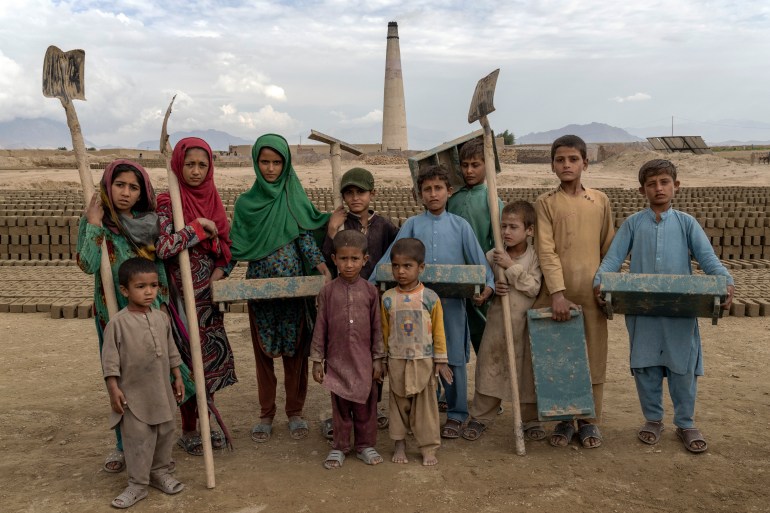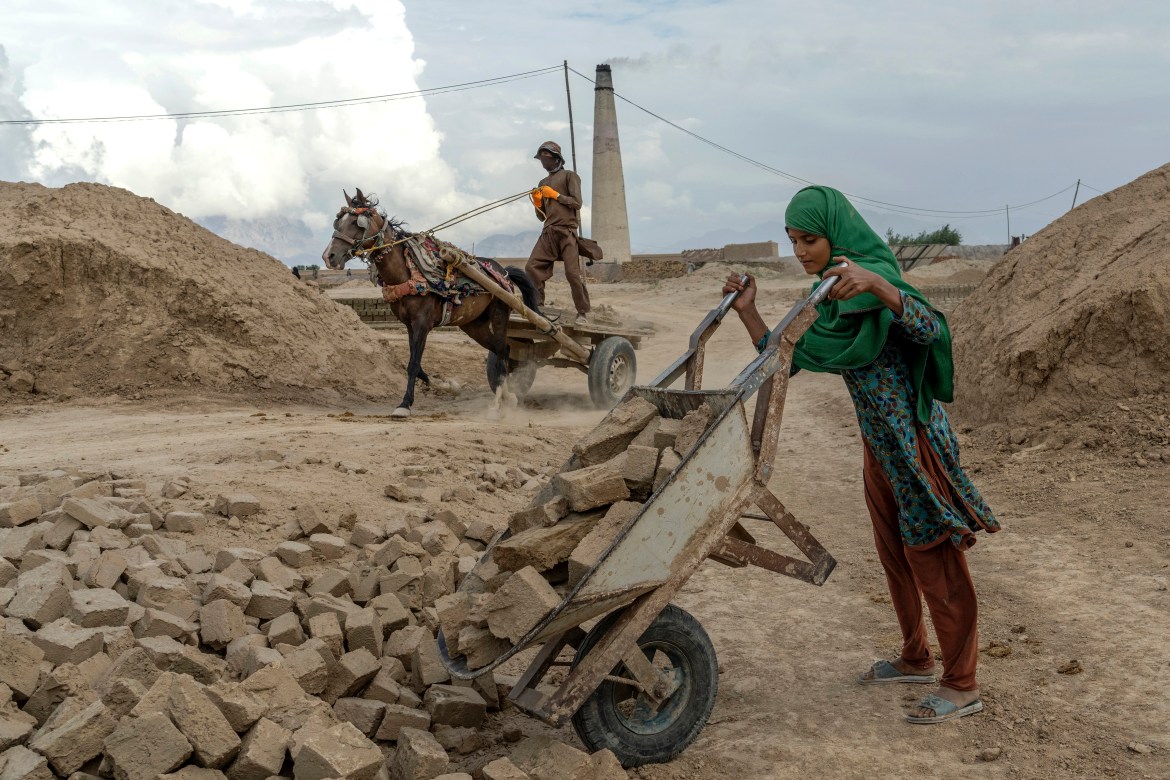Photos: Poverty pushes Afghan children to work at brick kilns
A recent Save the Children survey says half of Afghanistan’s families have put children to work to keep food on the table.
Nabila works 10 hours or more a day, doing the heavy, dirty labour of packing mud into moulds and hauling wheelbarrows full of bricks. At 12 years old, she has been working in brick factories for half her life now, and she is probably the oldest of all her co-workers.
Already high, the number of children put to work in Afghanistan is growing, fuelled by the collapse of the economy after the Taliban took over the country and the world cut off financial aid just more than a year ago.
A recent survey by Save the Children estimated that half of Afghanistan’s families have put children to work to keep food on the table as livelihoods crumbled.
Nowhere is it clearer than in the many brick factories on the highway north of the capital, Kabul. Conditions in the furnaces are tough even for adults. But in almost all of them, children as young as four or five labour alongside their families from early morning until dark.
Children do every step of the brickmaking process. They haul canisters of water, and carry the wooden brick moulds full of mud to put in the sun to dry. They load and push wheelbarrows full of dried bricks to the kiln for firing, then push back wheelbarrows full of fired bricks.

Only a few have been to school. Nabila, the 12-year-old, has been working in brick factories since she was five or six. Like many other brick workers, her family works part of the year at a kiln near Kabul, the other part at one outside Jalalabad, near the Pakistani border.
“We can’t think about anything else but work,” she said.
Mohabbat, a nine-year-old boy, stopped for a moment with a pained expression as he carried a load of charcoal. “My back hurts,” he said.
Asked what he wished for, he first asked: “What is a wish?”
Once it was explained, he was quiet for a moment, thinking. “I wish to go to school and eat good food,” he said, then added: “I wish to work well so that we can have a house.”
The landscape around the factories is bleak and barren, with the kilns’ smokestacks pumping out black, sooty smoke. Families live in dilapidated mud houses next to furnaces, each with a corner where they make their bricks. For most, a day’s meal is bread soaked in tea.
Rahim has three children working with him at a brick kiln, ranging from five to 12 years. He said he had no choice. “There’s no other way,” he said. “How can they study when we don’t have bread to eat? Survival is more important.”

Workers get the equivalent of $4 for every 1,000 bricks they make. One adult working alone cannot do that amount in a day, but if the children help, they can make 1,500 bricks a day, workers said.
According to surveys by Save the Children, the percentage of families saying they had a child working outside the home grew from 18 percent to 22 percent from December to June. That would suggest more than one million children nationwide were working. Another 22 percent of the children said they were asked to work on the family business or farm.
In June, 77 percent of the surveyed families reported they had lost half their income or more compared with a year ago, up from 61 percent in December.
At one of the kilns, it begins to rain. At first, the children were cheerful, thinking it would be a refreshing drizzle in the heat. Then the wind kicked up. A blast of dust hit them, coating their faces. The air turned yellow with dust. Some of the children could not open their eyes, but they kept working. The rain opened up into a downpour.
The children were soaked. One boy had water and mud pouring off of him, but like the others, he said he could not take shelter without finishing his work.
“We are used to it,” he said. Then he told another boy, “Hurry up, let’s finish it.”




